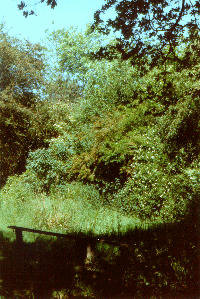|
|
 Bentley
Old Vicarage Nature Reserve is a small woodland reserve in Harrow, in the
north west suburbs of London. (go to How to find it...)
Where the reserve is now was the vicarage of All Saints Church, built along
with the church itself in 1848. The vicarage fell out of use in 1924 and
was finally demolished in 1955. A few of the trees you see now are relicts
of the vicarage garden while most have grown up since that time. In 1987
a group of volunteers took over the site and were soon sponsored by the
Herts. and Middx. Wildlife Trust. In 1992 Bentley Old Vicarage Nature Reserve
became part of the Harrow Nature Reserve System. A wildflower meadow in
the grounds of the day centre and the churchyard itself are also managed
to maintain species diversity.
Bentley
Old Vicarage Nature Reserve is a small woodland reserve in Harrow, in the
north west suburbs of London. (go to How to find it...)
Where the reserve is now was the vicarage of All Saints Church, built along
with the church itself in 1848. The vicarage fell out of use in 1924 and
was finally demolished in 1955. A few of the trees you see now are relicts
of the vicarage garden while most have grown up since that time. In 1987
a group of volunteers took over the site and were soon sponsored by the
Herts. and Middx. Wildlife Trust. In 1992 Bentley Old Vicarage Nature Reserve
became part of the Harrow Nature Reserve System. A wildflower meadow in
the grounds of the day centre and the churchyard itself are also managed
to maintain species diversity.

The Reserve today
Most of the reserve is deciduous wood, dominated by oak but with a
wide variety of other trees. A small glade at the northwest corner called
the butterfly meadow is host to grassland and hedgerow species.
Animal life
Look out for grey squirrels, rabbits and frogs. Other animals seen
include the wood mouse, fox, muntjak deer and toad.
The reserve is rich in woodland bird species. In winter mixed parties of tits, including tiny and lovely long-tailed tits, forage in the trees, constantly calling to each other. In summer listen for the drumming of great spotted woodpeckers. Kestrels have nested in the church tower most years, and can be seen trying, unsuccessfully, to drive away crows, magpies and jays. The full list of birds seen on the site is:
Blackbird
Blackcap
Blue Tit
Bullfinch
Carrion Crow
Chaffinch
Collared Dove
Goldcrest
Great Spotted Woodpecker
Great Tit
Greenfinch
Green Woodpecker
Kestrel
Jay
Long-tailed tit
Magpie
Mistle Thrush
Redwing
Robin
Song Thrush
Sparrow Hawk
Starling
Swift
Tree Creeper
Willow Warbler
Wood Pigeon
Wren
February: Snowdrop (Galanthus nivalis) is blooming in the wood. Where the rough path to the butterfly meadow leads off from the main loop, look for flowers of the winter heliotrope (Petasites fragrans).
March: In the wood snowdrops are still flowering, and are joined by the blue Chionodoxa, a garden flower that may be a relict of the vicarage. All through the wood the wide, triangular leaves of lords-and- ladies (Arum maculatum) are pushing up and for a month or so form the dominant ground cover. In the wildflower meadow and the churchyard look for flowers of primroses (Primula vulgaris), lesser celandine (Ranunculus ficaria) and wood anemone (Anemone nemorosa).
April: The male trees of sallow (Salix caprea) are splendid in their yellow catkins while the female catkins, on separate trees, are difficult to spot. A number of gean (wild cherry, Prunis avium) are also in bloom. Cow parsley (Anthriscus sylvestris) is growing through the leaves of lords-and-ladies and now becomes the dominant ground cover in the wood as the trees begin to leaf.
May: The wood is full of the seeds of sallow, falling from now obvious catkins on the female trees. Horse chestnut (Aesculus hippocastanum) is in bloom and hawthorn (Crataegus monogyna) is lovely at the edge of the butterfly meadow. From the butterfly meadow one can also see two apple trees in bloom, probably relicts of the vicarage garden. Under the trees the cow parsley is in bloom, together with bluebells (Endymion non-scriptus), violets (Viola riviniana) and lords-and-ladies.
June: The butterfly meadow is glorious with elder (Sambucus nigra) and dog rose (Rosa canina) in bloom along the edges and red clover (Trifolium pratense), crowfoot (Ranunculus repens) and tormentil (Potentilla erecta) in the grass.
High summer under the trees: Most of the flowering at ground level is now over as the trees come into full leaf and shade out the lower plants. Herb Robert (Geranium purpureum) and Wood avens (Geum urbanum, like tormentil a member of the rose family that looks like a buttercup) continue to flower from June onward and are joined in July by the tiny white flowers of enchanters nightshade (Circaea lutetiana). Bright red fruits of lords-and-ladies stand on stalks that are now isolated, all the leaves having died back. Even the cow parsley dies back, leaving the ivy once more as the dominant ground cover. Clumps of Male Fern (Drypoteris filix-mass) can be seen in many spots.
 High
summer in the butterfly meadow: Look for the reddish flowers of Great and
Rose bay willow herbs (Epilobium hirsutum, E. angustifolium), the yellow
creeping cinquefoil (Potentilla reptans) and ragwort (Senecio jacobaea),
and white ten-rayed flowers of lesser stitchwort (Stellaria graminea).
Broad-leafed dock (Rumex obtusifolius) is also in bloom, although its familiar
dry brown seeds are more prominent.
High
summer in the butterfly meadow: Look for the reddish flowers of Great and
Rose bay willow herbs (Epilobium hirsutum, E. angustifolium), the yellow
creeping cinquefoil (Potentilla reptans) and ragwort (Senecio jacobaea),
and white ten-rayed flowers of lesser stitchwort (Stellaria graminea).
Broad-leafed dock (Rumex obtusifolius) is also in bloom, although its familiar
dry brown seeds are more prominent.
The old inn: (Do not enter the grounds - the fine frontage can be seen well from the edge of the wildflower meadow). Built to serve traffic on both the Pinner-Uxbridge and Harrow-Bushey roads, this was built in the early 18th century and had the traditional if prosaic name of the Nag's Head. In the early 19th century it was converted to a private house and later to offices. It is now occupied by Spectris Ltd., manufacturers of transducers and instrumentation.
The main churchyard: at the eastern edge of the church, on the way round to the Nature Reserve, notice the Blackwell Vault. The Blackwells, of Crosse and Blackwell soups, were prominent benefactors of the church and community.
The churchyard extension. Although part of the municipal cemetery this
is maintained far more harmoniously than the main cemetery, with many wild
flowers to appreciate. At the southern tip look out for the grave of William
Leefe Robinson, awarded the Victoria Cross for his bravery in shooting
down a Zeppelin over Enfield during the first world war. He died in the
great influenza epidemic of 1918.

To enhance the educational value of the site for local people and schoolchildren.
To monitor the wildlife populations of the site and public use of the
site to assess whether management techniques are having the desired effect.
Annual mowing of the butterfly meadow.
Felling or coppicing of trees where necessary to maintain and improve
species diversity in the woodland.
 We
need help, especially young people to join the management comittee.
We
need help, especially young people to join the management comittee.
Would you like to know more about British nature reserves?
Look at http://www.thisisnorthlondon.co.uk/ for whats on in Harrow and its surroundings.